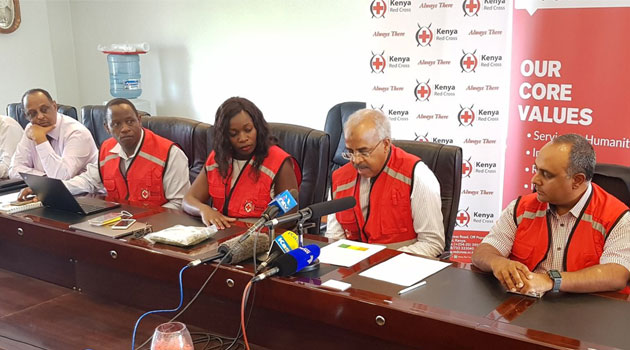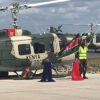
KRCS is optimistic about achieving this year’s budget funding, having raised 76 per cent of last year’s Sh2.5 billion appeal/CFM NEWS
NAIROBI, Kenya, Feb 22 – The Kenya Red Cross Society (KRCS) is seeking Sh1.044 billion to fund its 2018 drought response and recovery program which is projected to reach some 1.3 million people in Arid and Semi-Arid Land (ASAL) counties.
While making the appeal on Thursday, KRCS Secretary General Abbas Gullet said about 3.4 million people concentrated in 10 ASAL counties are facing food insecurity as a result of prolonged drought and failed rainfall.
“We’ve increased the number of targeted population to 1,373,294 people in order to support more families affected by the drought crisis in Kenya,” Gullet said.
“This is a crisis that has been escalating with the ASAL areas being the most affected,” he added while unveiling mobile money transfer and bank accounts through which well-wishers can channel their contributions.
Safaricom customers can use pay bill number 10000 and account name ‘drought,’ while those on Airtel Money can send contributions through business name “RedCross” and account name ‘drought.’
According to Gullet, Garissa, Wajir, Isiolo, Tana River, Kajiado and Kilifi counties remain under the drought alarm phase with Mandera, Marsabit, Kitui, and Taita Taveta witnessing medium drought stress.
He explained that KRCS’s intervention was informed by an assessment conducted by the National Drought Management Authority (NDMA) in December 2017 which assessment recommended an extension of relief programmes in ten ASAL counties to April this year.
“Our appeal is to all the stakeholders, local and international partners to support us in mitigation efforts,” Gullet told the media at the KRCS headquarters in Nairobi’s South ‘C’.
“We’re keen to escalate our interventions through direct cash transfers, health and nutrition outreaches, rehabilitation of key communal watering points, food distribution, as well as animal offtake and slaughter,” he noted.
KRCS is optimistic about achieving this year’s budget funding, having raised 76 per cent of last year’s Sh2.5 billion appeal.
According to the agency, a total of 1.2 million food insecure persons were reached through various interventions last year.
“These include 252,252 people through cash transfers, 221,880 people through general food distributions, 343,887 people through the provision of water and 400,962 people through the animal destocking programme,” KRCS reported.
In addition, 74,796 people received health services in Red Cross supported outreach clinics.
125,000 farmers in Kitui County benefitted from an early recovery programme.
In its 2018 intervention, KRCS is expected to spend Sh420 million on early recovery programmes, Sh355.2 million on cash transfers, Sh60 million on livestock offtake, Sh112.4 million in provision of Water Sanitation and Hygiene (WASH) services, Sh44.4 million on food distribution, and Sh12.2 million on health and nutrition.
Red Cross projects to spend Sh40 million in operation costs.
The KRCS appeal comes barely a month after the United Nations Children’s Fund (UNICEF) published a humanitarian brief which estimated projected an increase in food insecure persons to 3.9 million, an upward of half a million compared to last year’s 3.4 million.
READ: Half a million more Kenyans to face food insecurity in 2018
According to UNICEF, the number of children under the age of eighteen facing food insecurity could increase to 1.8 million this year, up from 1.1 and 1.6 million in March and August last year.
UNICEF is appealing for US $ 34,235,000 million to respond to the humanitarian needs mostly arising in 23 ASAL counties.
As of October 31, 2017, UNICEF had a funding gap of 27 per cent, having secured $31 million against its $42.4 million 2017 appeal.
The UN agency aims at reaching 1.6 million adults and 1.1 million children through wide-ranging interventions.
Among areas being targeted are nutrition, health, water, sanitation, and hygiene, child protection, HIV/AIDS and social protection.









































